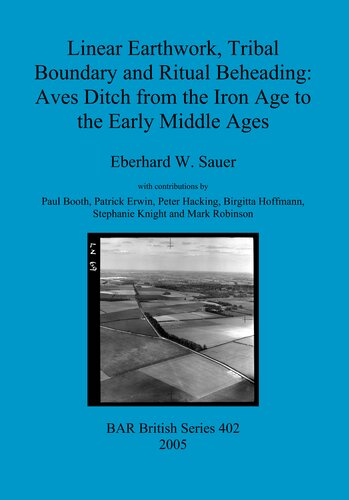

Most ebook files are in PDF format, so you can easily read them using various software such as Foxit Reader or directly on the Google Chrome browser.
Some ebook files are released by publishers in other formats such as .awz, .mobi, .epub, .fb2, etc. You may need to install specific software to read these formats on mobile/PC, such as Calibre.
Please read the tutorial at this link: https://ebookbell.com/faq
We offer FREE conversion to the popular formats you request; however, this may take some time. Therefore, right after payment, please email us, and we will try to provide the service as quickly as possible.
For some exceptional file formats or broken links (if any), please refrain from opening any disputes. Instead, email us first, and we will try to assist within a maximum of 6 hours.
EbookBell Team

0.0
0 reviewsAves Ditch is one of the best-preserved and yet most enigmatic of the ancient monuments in Oxfordshire, and it has remained a landmark to the present day. Lined by a straight row of trees, it can be seen over a fair distance. It runs virtually dead straight over no less than 4.2 km from north of Kirtlington to the modern parish boundary between Upper Heyford and Middleton Stoney. For over three centuries scholars have wondered whether it is of pre-Roman, Roman or Anglo-Saxon origin, whether it was a road or a linear earthwork and, in the latter case, what function it may have served. Notwithstanding this centuries-old debate and it being easily accessible just 15 to 22 km north of Oxford, it is also one of the least known of the county's visible archaeological features and is seldom referred to in popular or scholarly work on the history or archaeology of the region. Previously unpublished excavations of the 1930s and further work in the 1990s have contributed much to solving this enigma, and the present book provides the final report on these excavations.